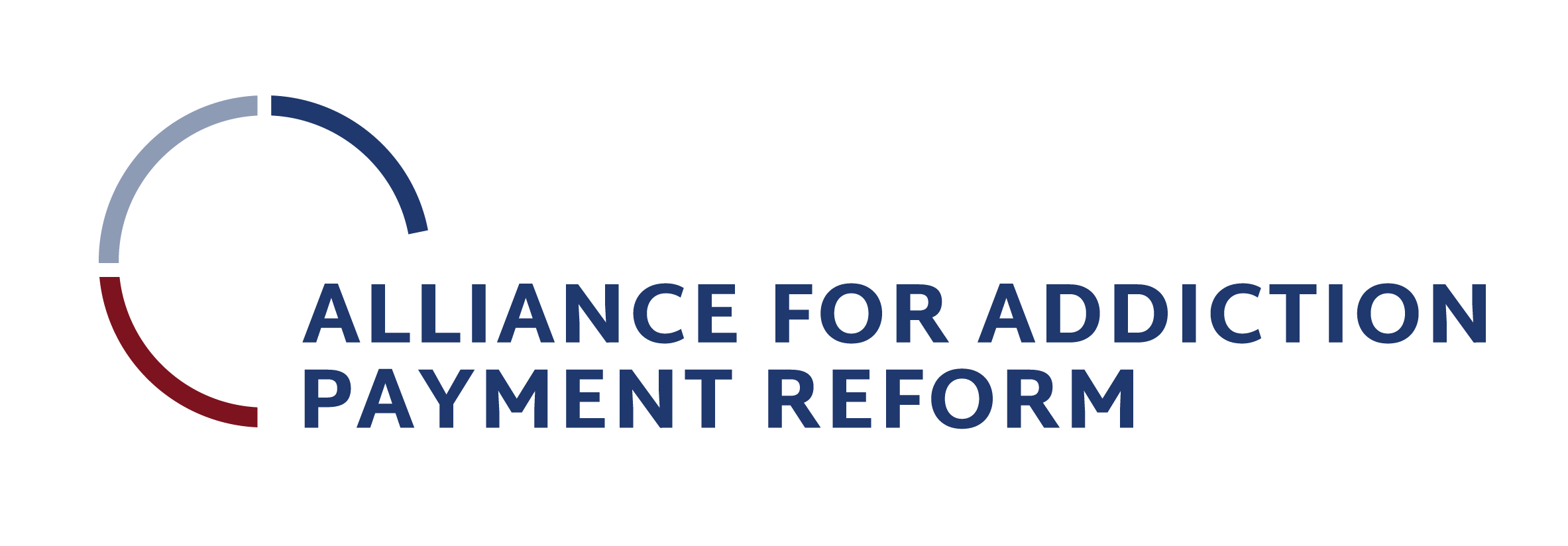Payer organizations have been experiencing increased pressure to ensure that they include high-quality mental health and substance use disorder (MH/SUD) care providers in their networks, which aim to improve access and cost-effectiveness. Comprehensive MH/SUD service delivery models have been playing an increasingly prominent role with respect to addressing this pressure while continuing to collect pertinent data to inform its patient outcomes and ability to support an extremely fractured service delivery system that has historically incentivized volume over-quality service delivery.
Payers are increasingly adopting value-based reimbursement (VBR) models for SUD treatment as they seek to improve outcomes and reduce the high costs associated with ineffective care. Traditional fee-for-service models have historically incentivized volume over quality, often leading to fragmented and costly treatment pathways. In contrast, VBR models – such as bundled payments, capitation, and pay-for-performance structures – align financial incentives with patient recovery metrics, care coordination, and long-term success. While adoption is still evolving, payers, Medicaid programs, and accountable care organizations (ACOs) are piloting and expanding these models, leveraging data analytics and evidence-based care strategies to drive better results. Challenges remain, including provider readiness, data integration, and defining meaningful outcome measures, but momentum is growing as stakeholders recognize the potential for VBR to transform SUD care delivery.
For this month’s Alliance newsletter, I connected with Stuart Lustig, MD, MPH, National Medical Executive for Behavioral Health Strategy and Product Design at Cigna Healthcare to learn more about his organization’s progress with establishing value-based, alternative payment model contracts with behavioral health providers. Specifically, I sought to learn more about Evernorth Health Services’ behavioral health offerings and work to advance measurement-based care with its behavioral health network. According to a case study published on their website, an initial pilot launched with “44,000 network clinicians and currently stands at more than 53,000 providers.” “The providers include behavioral health therapists who can help with a variety of mental health conditions, including anxiety, depression, sleep disorders, substance use disorders, and more.”
Eric (Alliance for Addiction Payment Reform): Dr. Lustig, thank you for taking the time to connect with me on this rapidly evolving topic. First, could you describe the measurement-based care approach you use with your behavioral health network?
Dr. Lustig (Cigna Healthcare): Hi, Eric; first of all, thanks so much for the opportunity to reconnect with you. As you alluded to above, the beauty of value-based reimbursement is the alignment of financial incentives with higher-quality treatment and greater affordability. Also, and I think this part is often overlooked, clinicians may find that their focus on better results for both patients and populations is more professionally fulfilling.
While there is ongoing debate about what quality behavioral health care is or how best to measure it, Evernorth believes that rapid access to care is critically important, particularly in the case of substance use disorder treatment. For example, with patients presenting to the emergency department post-overdose, there’s really a very narrow window of time to get them connected to treatment to prevent the next relapse. Beyond access, matching patients with the right clinician is crucial. We measure this clinician “stickiness” as a proxy for therapeutic alliance. Essentially, if a patient returns for follow-up appointments, it indicates a strong clinician-patient connection. This metric is easily tracked through claims data. And in general, if patients are getting the care they need from a provider, we would expect to see less utilization of emergency services or inpatient levels of care. The affordability of care is also a key concern for our clients and us, as we aim to manage the total cost of care episodes responsibly.

While there is ongoing debate about what quality behavioral health care is or how best to measure it, Evernorth believes that rapid access to care is critically important, particularly in the case of substance use disorder treatment.
Eric: In your 2024 paper “Has Value-Based Reimbursement Arrived for Behavioral Health? A Payer Perspective” published in The Journal of Mental Health Policy and Economics, you discuss several hurdles concerning adoption of VBR models with respect to providers including provider shortages, practice patterns, and technology. How has Evernorth been able to partner with BH provider systems to address these concerns in a proactive way?
Dr. Lustig: There’s a lot to consider in this question, but I’ll focus on practice patterns, particularly how providers define and measure clinical improvement. As noted in our paper, integrating measurement-based tools into clinical practice and treating towards a defined outcome has been a slow process. There are literally hundreds of clinical rating scales out there, and historically I think health plans have been reluctant to prescribe specific ones to clinicians. That said, larger provider groups and aggregators now possess capabilities, such as electronic medical records and advanced data analytics to achieve better outcomes. Provider groups I’ve talked to have told me integrating a rating scale into clinical practice is manageable; their primary need is clarity from us on where the goalposts are. Tools that are relatively brief, easy to administer and interpret, and ideally in the public domain can benefit clinicians, patients, and health plans. These tools also facilitate outcome comparisons across provider groups. As a result, discussions about what clinical improvement looks like have gotten easier.
Eric: What key challenges have you experienced along the way, and how have you overcome them?
Dr. Lustig: Technology remains a significant challenge, as you mentioned earlier, and it’s an area Evernorth is actively working to improve. Health plans and provider organizations possess vast amounts of patient data. I think our biggest challenge is determining how to share this data safely, securely, and meaningfully. Addressing these technological challenges can be costly, potentially reaching millions or tens of millions of dollars to address. Ultimately, health plans aim to integrate data from provider partners efficiently regarding care access and clinical outcomes, both to assess quality of care and to efficiently generate the contracted payments based on these outcomes without having to pull out our abacuses or calculators. Provider partners want data back from health plans as well. For clinical care, it is beneficial for them to know if one of their patients visited the emergency room, received a new diagnosis, or started a new medication. Additionally, to demonstrate the value of their substance use disorder treatment, clinicians are interested in any medical cost deflections that payers can share. While we haven’t fully resolved these issues, data exchange is occurring, albeit in a more manual fashion for now.
Eric: Are there specific incentives that have resonated with providers when it comes to the upside risk scenarios of VBR arrangements?
Dr. Lustig: You know, there are various contractual approaches to incentivizing higher quality and more affordable care, but it’s crucial that these incentives feel meaningful to providers. By that I mean those incentives should offset the additional expense of administering measurements and generating reports on outcomes for individuals and populations, in addition to providing the extra reward and recognition for results. The good news for clinicians is that they can provide care more affordably and efficiently when outcomes are tracked along the way, so they can capture value there, as well as appropriate incentive payments. Additionally, both health plans and clinicians will want to ensure that patients are being connected with high-performing provider partners. That’s a win for everyone, especially providers and patients.
Eric: As we continue into 2025, what are some of your tailwinds and headwinds, particularly with respect to current market experience and the potential for VBR growth with BH providers do you see on the horizon?
Dr. Lustig: Over the past few years, both behavioral health providers and health plans have made incremental progress toward value-based reimbursement. Challenges have included challenges with EMRs for behavioral care, a paucity of behavioral providers participating in health plan networks, and a lack of appetite or capacity for incorporating measurements into treatment, probably for a variety of reasons. Health plans have also been working to figure out which quality metrics are important and how best to structure them. However, the landscape is changing, and I believe we are now well-positioned for success. EMRs are significantly more common than they were just a decade ago, and our behavioral network has continued to expand, partly through larger provider groups equipped with data analysts to report on results at an individual and population level. Organizations such as the American Psychiatric Association, the American Psychological Association, the Kennedy Forum, and the Joint Commission/National Quality Forum have been championing measurement-based care, contributing to a cultural shift towards paying providers for better outcomes. While there will always be clinicians who prefer fee-for-service models with less accountability for outcomes, the trend among larger players is moving towards value-based reimbursement.
Eric: What else do you think is important for Alliance participants to be aware of when it comes to pursuing alternative payment methodologies? Are there specific ways that those in the SUD treatment industry, whether on the provider or payer side of the equation, can be proactive?
Dr. Lustig: It’s important for Alliance participants to understand that collaborating with health plans on alternative payment methodologies is a collaborative process, where outcomes must benefit both parties. Both health plans and providers want to see success. Health plans want to be able to demonstrate to their clients that they are achieving better outcomes in an affordable way. Clinicians, on the other hand, should advocate for the metrics that they can excel in. For instance, some substance use disorder providers have stellar records in achieving abstinence, while others focus on harm reduction or emphasizing ongoing patient engagement and assiduously tracking that. Some provider groups excel at guaranteeing rapid access to specific types of care within their system. While plans may be interested in all of these, contracts based on alternative payments should focus on where success is most likely to be achieved.
Eric: Thank you so much for taking the time to connect with me regarding this topic. You have given us a great deal to consider when incorporating these services into our full continuum of services mindset for working with those with SUD.
Evernorth Evernorth Health Services creates pharmacy, care and benefits solutions to improve health and increase vitality. We relentlessly innovate to make the prediction, prevention, and treatment of illness and disease more accessible to millions of people. Evernorth capabilities are powered by our businesses, including Express Scripts, Express Scripts® Pharmacy, Accredo, EviCore, and MDLIVE, along with holistic Evernorth platforms and solutions that move people and organizations forward. All Evernorth solutions are serviced and provided by or through operating affiliates of Evernorth Health, a wholly owned subsidiary of The Cigna Group (NYSE: CI), or third-party partners. Learn more at evernorth.com.

